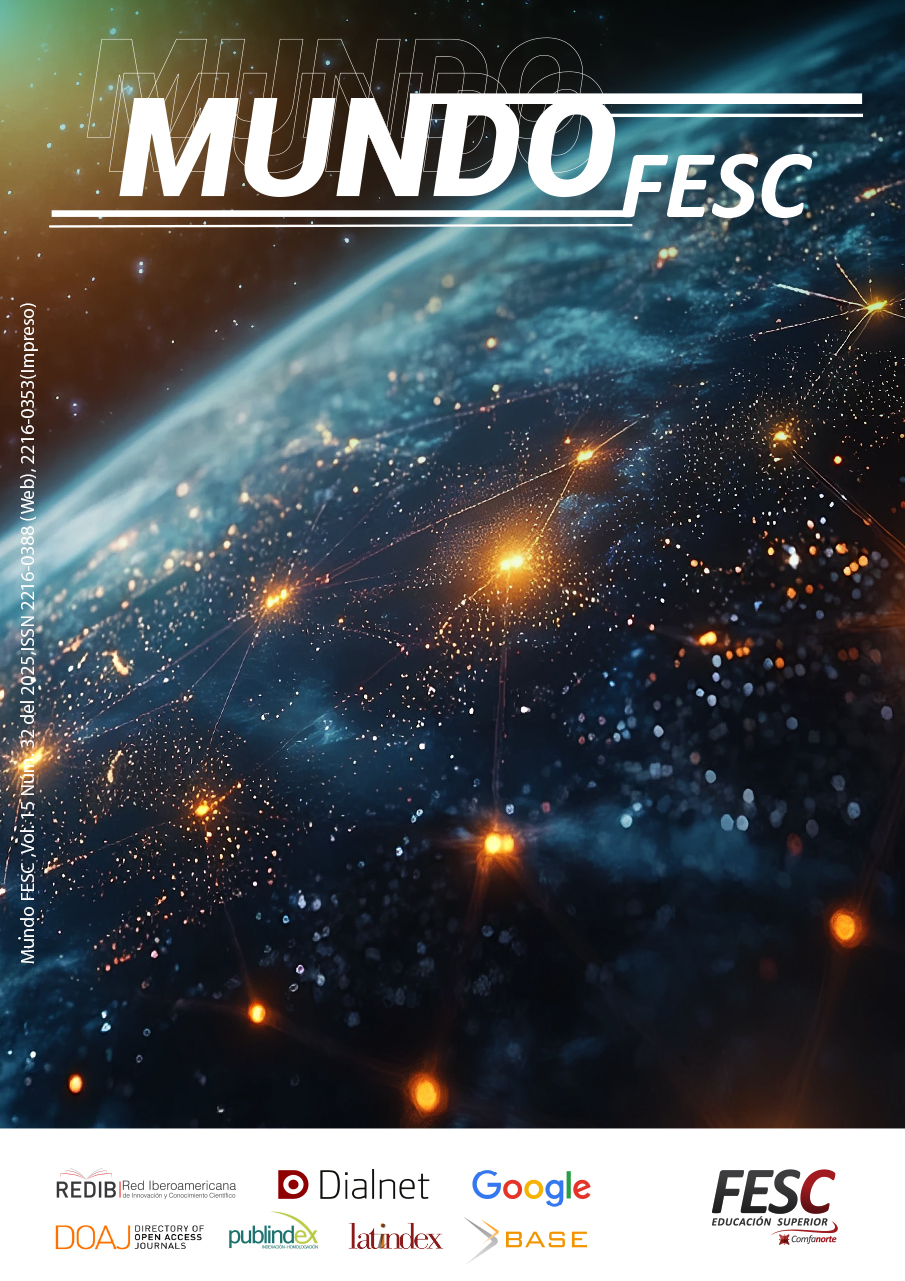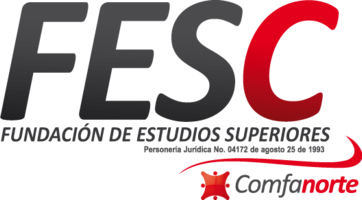El caficultor digital: una apuesta por la incursión de la tecnología en el agro
DOI:
https://doi.org/10.61799/2216-0388.1444Palabras clave:
Agricultura de precisión, Internet de las cosas, aprendizaje de máquina, cultivos de café, redes inalámbricas de sensoresResumen
La realidad del agro colombiano en relación a la difusión y adopción de las tecnologías de la información y la comunicación es casi inexistente, por lo que actualmente procesos productivos relacionados con cultivos como el café, se siguen realizando en forma empírica o manual; Es por ello que en el presente trabajo presentamos un acercamiento a lo que hemos denominado el “Caficultor digital”, donde se busca que los caficultores de la región puedan hacer uso de la tecnología para mejorar las condiciones de sus cultivos, es por ello que nos enfocamos por las redes inalámbricas de sensores (WSN) permitiendo que el caficultor a través del uso de esta herramienta se encuentre en capacidad de monitorear las variables agroambientales más importantes para su cultivo y mediante la aplicación de técnicas de aprendizaje automático se puedan determinar la incidencia de dichas variables en la proyección de futuras cosechas o en la producción esperada.
Descargas
Referencias
[1] M. Espinoza-Garcia, G. Alvarez-Martinez y D. Chora-Garcıa, «La perfecta combinacion de la internet de las cosas y la agricultura de precision,» Killkana Tecnica, vol. 3, nº 2, pp. 31-38, 2019. DOI: https://doi.org/10.26871/killkana_tecnica.v3i2.533
[2] A. I. Montoya-Muñoz y O. M. Caicedo-Rendon, «An approach based on fog computing for providing reliability in iot data collection: A case study in a colombian coffee smart farm,» Applied Sciences, vol. 10, nº 24, 2020. DOI: https://doi.org/10.3390/app10248904
[3] S. K. Swami-Durai y M. D. Shamili, «Smart farming using machine learning and deep learning techniques,» Decision Analytics Journal, vol. 3, nº 100041, 2022. DOI: https://doi.org/10.1016/j.dajour.2022.100041
[4] J. Herrera y V. Ortiz, «Implementación de un sistema de monitoreo y control con tecnología IoT para determinar el comportamiento de las variables ambientales en la avicultura,» Investigación e innovación En Ingenierías, vol. 10, nº 1, pp. 30-41, 2022. DOI: https://doi.org/10.17081/invinno.10.1.5016
[5] I. D. D. López, J. F. Grass, A. Figueroa y J. C. Corrales, «A proposal for a multi- domain data fusion strategy in a climate-smart agriculture context,» International Transactions in Operational Research, vol. 30, nº 4, pp. 2049-2070, 2023. DOI: https://doi.org/10.1111/itor.12899
[6] A. F. Jiménez, P. F. Cárdenas, F. Jiménez, A. Ruiz-Canales y A. López, «A cyber- physical intelligent agent for irrigation scheduling in horticultural crops,» Computers and Electronics in Agriculture, vol. 178, nº 105777, 2020. DOI: https://doi.org/10.1016/j.compag.2020.105777
[7] M. Gutierrez- Hinestroza y S. . A. Iturralde-Kure, «Universidad Estatal Península de Santa Elena,» [En línea]. Available: https://incyt.upse.edu.ec/libros/index.php/upse/catalog/view/2/6/124-1. [Último acceso: 24 07 2023].
[8] E. C. Mantovani y C. Magdalena, «Procisur,» 24 03 2014. [En línea]. Available: http://www.gisandbeers.com/RRSS/Publicaciones/Manual-Agricultura-Precision.pdf. [Último acceso: 27 07 2023].
[9] H. Salazar y H. Duque, «Variables agronómicas determinantes de la productividad del cultivo de café en fincas del departamento de caldas,» Revista Cenicafe, vol. 70, pp. 81-92, 2019. DOI: https://doi.org/10.38141/10778/70106
[10] J. E. Gutiérrez-Lopera, J. A. Toloza-Rangel, Á. J. Soto-Vergel, O. A. López-Bustamante y D. Guevara-Ibarra, «Sistema integrado de monitoreo inalámbrico de variables agroambientales en un cultivo de tomate para la generación de mapas de intensidad,» Revista UIS Ingenierıas, vol. 20, nº 2, pp. 163-180, 2021. DOI: https://doi.org/10.18273/revuin.v20n2-2021014
[11] R. Martínez Jacobson, Comparativa y estudio de plataformas IoT, Cataluña: Escola Universitaria Politécnica de Mataro, 2017.
[12] V. Nundloll, B. Porter, B. Gordon S. , B. Emmett, J. Cosby, J. Davey L. , D. Chadwick, B. Winterbourn, P. Beattie, . D. Graham, R. Shaw, W. Shelley, M. Brown y I. Ullah, «The design and deployment of an end-to-end IoT infrastructure for the natural environment,» Future Internet, vol. 11, nº 6, pp. 1-27, 2019. DOI: https://doi.org/10.3390/fi11060129
[13] P. Sanjeevi, S. Prasanna, B. Siva Kumar, G. Gunasekaran, I. Alagiri y R. Vijay Anand, «Precision agriculture and farming using internet of things based on wireless sensor network,» Transactions on Emerging Telecommunications Technologies, vol. 12, p. 31, 2020. DOI: https://doi.org/10.1002/ett.3978
[14] J. Jin, M. Yajie , Z. Yingcong y H. Qihui, «Design and implementation of an agricultural IoT based on LORA,» de MATEC Web Conf, Malasya, 2018. DOI: https://doi.org/10.1051/matecconf/201818904011
[15] M. Quiñones-Cuenca, V. González-Jaramillo, R. Torres y . M. Jumbo, «Sistema De Monitoreo de Variables Medioambientales Usando Una Red de Sensores Inalámbricos y Plataformas De Internet De Las Cosas,» ENFOQUE UTE, vol. 8, nº 1, pp. 329-343, 2017. DOI: https://doi.org/10.29019/enfoqueute.v8n1.139
[16] H. Syed Zaeem, «aeris,» [En línea]. Available: https://www.aeris.com/resources/aeris-intelligent-iot-network/. [Último acceso: 01 08 2023].
[17] J. Fernandez, N. Miranda, R. Guerrero y F. Piccoli, «Datos no Estructurados No Textuales: Desarrollo de nuevas tecnologías,» de XII Workshop de Investigadores en Ciencias de la Computación, San Luís , 2010.
[18] J. Villanueva Chávez, Marco de trabajo basado en ontologías para el proceso ETL (Tesis de maestría), Mexico D.F.: Centro de Investigación y de Estudios avanzados del IPN, 2011.
[19] C. Egas, D. Viracocha y J. Rivera, «Implementación de una red inalámbrica de sensores para la gestión de luminarias utilizando IPv6,» Enfoque UTE, vol. 10, nº 4, pp. 45-56, 2019. DOI: https://doi.org/10.29019/enfoque.v10n4.553
[20] . P. Fremantle, «WSO2,» [En línea]. Available: https://resources.wso2.com/whitepapers/a-reference-architecture-for-the-internet-of-things. [Último acceso: 21 07 2023].
[21] J. Arcila Pulgarin, «Factores que determinan la productividad del cafetal,» [En línea]. Available: https://www.cenicafe.org/es/documents/LibroSistemasProduccionCapitulo3.pdf. [Último acceso: 02 08 2023].
[22] M. Nielsen, «Neural Networks and Deep Learning,» [En línea]. Available: http://neuralnetworksanddeeplearning.com/about.html. [Último acceso: 06 08 2023].
23] L. Bertona, Entrenamiento de Redes Neuronales Basado en Algoritmos (Tesis de grado)., Buenos Aires: Universidad de Buenos Aires, 2005.
[24] «Weather Spark,» [En línea]. Available: https://es.weatherspark.com/m/22426/7/Tiempo-promedio-en-julio-en-Salento-Colombia. [Último acceso: 06 08 2023].
[25] J. Egas Daza y A. F. Bravo Portilla, Calculando la disponibilidad de nitrógeno en suelos establecidos con cultivos de café utilizando técnicas de aprendizaje automático (Tesis de grado), Popayán : Universidad del Cauca, 2022.
Publicado
Número
Sección
Licencia
Derechos de autor 2023 Mundo FESC

Esta obra está bajo una licencia internacional Creative Commons Atribución-NoComercial 4.0.






